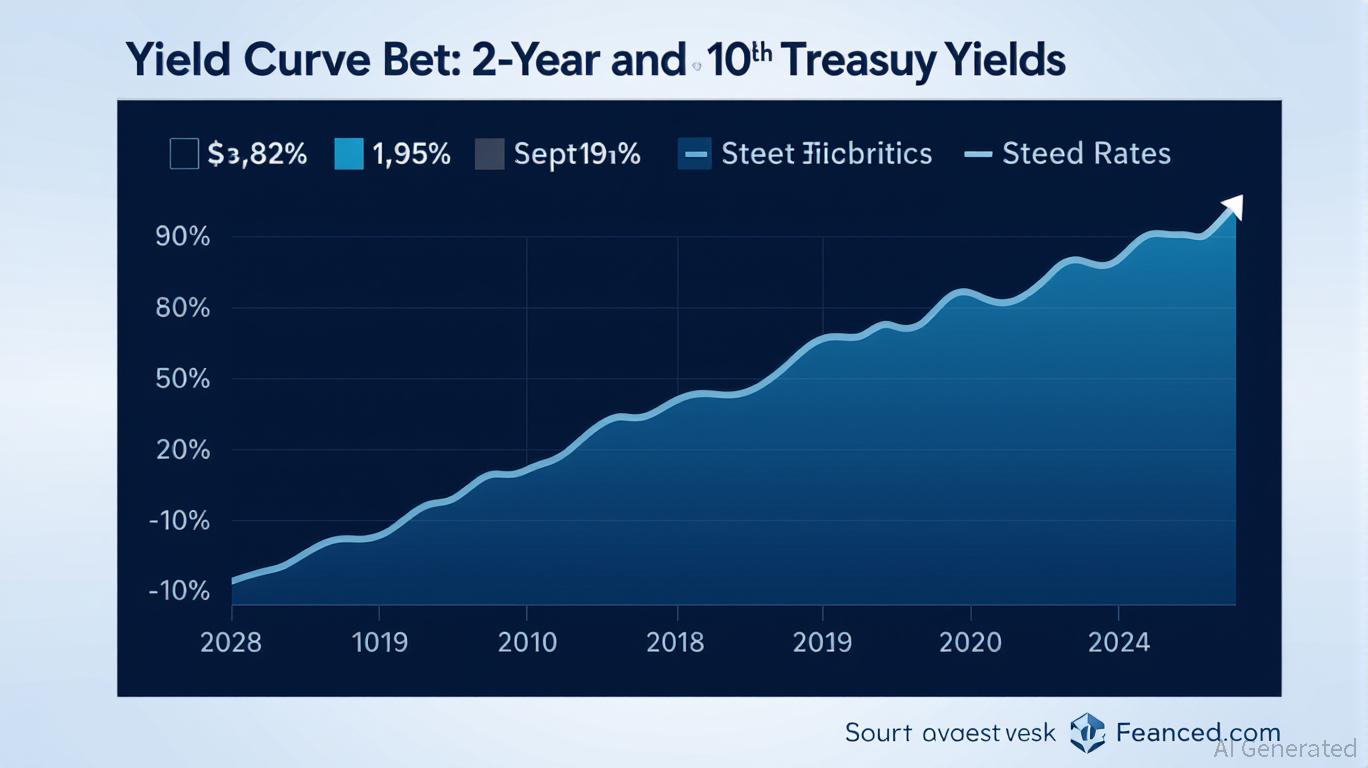U.S. Treasury Yield Curve Dynamics: Navigating Fed Policy Shifts and Investment Opportunities
The Federal Reserve's aggressive rate hikes in 2022–2023 and subsequent cuts in late 2024 have reshaped the U.S. Treasury yield curve, creating both risks and opportunities for investors. As the Fed balances inflation control with economic growth, understanding how its policy shifts impact bond yields, mortgage rates, and equity markets is critical. Let's dissect the dynamics and strategize accordingly.
The Fed Funds Rate: A Catalyst for Yield Curve Volatility
The Federal Funds Rate has swung dramatically since 2020. After plummeting to near-zero (0.25%) in March 2020 to combat the pandemic, it surged to a 22-year high of 5.50% in July 2023. By July 2025, it had retreated to 4.50%, with projections pointing to further declines to 3.50% by 2027. This rollercoaster ride directly influenced the yield curve's slope—the spread between short- and long-term Treasury yields.
This graph illustrates how the Fed's tightening in 2022 caused the yield curve to invert (short-term rates exceeding long-term rates), a classic predictor of economic slowdowns. By late 2024, cuts began steepening the curve again, with the 2-year yield falling faster than the 10-year yield.
Yield Curve Slope: A Barometer of Policy Impact
The yield curve's slope reflects investor expectations for growth and inflation. A steepening curve (long-term rates rising faster than short-term) signals optimism, while a flattening/inverting curve (rates converging or reversing) suggests caution.
- 2022 Inversion Crisis: The Fed's 75-basis-point hikes in July and September 2022 pushed the 2-year yield to 4.45%, exceeding the 10-year yield's 3.95%. This inversion, combined with soaring mortgage rates (peaking at 7.08% in October 2022), triggered a housing slowdown and equity volatility.
- 2024–2025 Steepening: Fed cuts in late 2024 reduced the 2-year yield to 4.25% by July 2025, while the 10-year held steady at 4.35%, narrowing the spread but signaling a less acute risk of recession.
Mortgage Rates: A Lagging Indicator of Fed Policy
Mortgage rates typically lag Fed moves but are heavily influenced by long-term bond yields. The 30-year fixed rate dropped from 7.08% in 2022 to 6.8% by mid-2025, still elevated but more manageable for buyers.
This chart shows how mortgage rates peaked after Fed hikes, then declined as the Fed paused and cut rates. Investors in mortgage-backed securities (MBS) benefited as spreads widened post-2022, offering higher yields.
Investment Opportunities: Bonds, Equities, and Sector Plays
- Bonds:
- Long-Term Treasuries (10Y+): Steepening curves favor long-dated bonds. For example, the 30-year yield fell to 4.3% in early 2025, offering capital gains as rates decline.
MBS: Non-Agency RMBS (with government guarantees) provide attractive yields of 5.5%+, especially if prepayment risks stabilize.
Equities:
- Rate-Sensitive Sectors: Utilities and real estate (e.g., REITs) thrive in lower-rate environments. The S&P 500's utilities sector rose 12% in 2025 as rates eased.
Financials: Banks and insurers may underperform if the curve flattens further, as net interest margins shrink.
Strategic Hedging:
- Use inverse Treasury ETFs (e.g., TBF) to bet on rising yields if inflation resurges.
- Consider floating-rate notes (FRNs) tied to SOFR, which benefit from Fed rate pauses.
Risks and Considerations
- Fed Policy Uncertainty: While cuts are anticipated, geopolitical risks (e.g., trade wars) or inflation spikes could force a pause.
- Curve Inversion Lingering: Even a slightly inverted curve (e.g., 2Y > 5Y) signals caution for long-duration bonds.
Final Takeaways
The yield curve's slope remains a key signal for investors. With the Fed's path now leaning toward easing, a steepening curve favors long-term bonds and rate-sensitive equities. However, staying nimble is crucial—monitor the 10-year yield and Fed meeting minutes closely.

Position portfolios for yield-seeking assets while maintaining flexibility. The next Fed pivot could redefine market dynamics—stay informed, and adjust accordingly.
This analysis combines historical data with actionable insights to help investors navigate the evolving landscape of U.S. Treasury yields and Fed policy.
Sign up for free to continue reading
By continuing, I agree to the
Market Data Terms of Service and Privacy Statement

Comments
No comments yet